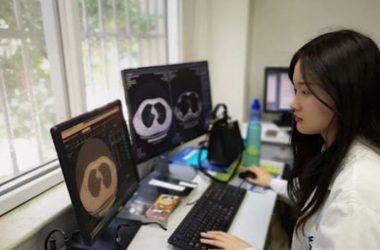Executive Summary:
Modern surveillance and law enforcement activities have been revolutionized by ALPR (Automatic License Plate Recognition) detection software. Stakeholders can make wise decisions to improve security and expedite operations by comprehending the significance of ALPR Accuracy and Reliability.
Introduction:
Automatic License Plate Recognition (ALPR) detection software has emerged as a formidable invention at a time when technological breakthroughs are changing the way we approach security and surveillance.
A strong tool that has the potential to transform law enforcement, traffic management, and crime prevention has emerged at the junction of artificial intelligence, computer vision, and data analytics. But like any cutting-edge technology, ALPR systems’ effectiveness depends on two important pillars: accuracy and reliability.
The foundation upon which the entire functionality of such systems is constructed is ALPR Accuracy and Reliability.
In this blog, we examine the nuances of these two crucial parts, analyzing the components that support their success and examining their effects on various applications.
ALPR Reliability and Accuracy: Important Considerations
The development of ALPR detection software stands out as a noteworthy advancement at a time when technology is transforming the fields of security and law enforcement.
Due to its potential to revolutionize surveillance, traffic management, and crime prevention, automatic license plate recognition (ALPR) technology has gained popularity. As with any technology, ensuring ALPR’s accuracy and reliability is essential for its effective application.
The following are some key factors to consider regarding the accuracy and reliability of ALPR detection software.
Key Considerations:
- Training and Data Quality
A key principle, the caliber of the data it processes, is at the core of any ALPR system’s effectiveness. Capturing clear, high-resolution photos that the system’s algorithms can precisely decode is necessary to recognize license plates properly.
Advanced hardware, ideal camera positioning, and appropriate lighting are all necessary for this level of clarity to be achieved.
- Optimal Placement and High-Resolution Cameras
The cameras that take pictures of license plates are the first step in establishing the data quality. Even from a distance or in difficult lighting conditions, detailed and crisp photographs can be captured with the help of high-resolution cameras and high-quality lenses. Furthermore, these cameras must be strategically placed.
Having a clear view of license plates, whether on moving or stationary objects, lowers the chance of getting distorted or incomplete photos, improving accuracy.
- Real-time Alerts and Processing
The capacity of ALPR detection software to process license plate data in real-time, enabling quick identification and response, is one of its most alluring advantages. This real-time processing capability has enormous potential for various uses, such as security operations, traffic control, and law enforcement.
The problem of reducing false positives, or situations where the system mistakenly recognizes a license plate or issues an alarm based on faulty information, comes with immense power.
- Pattern Recognition and Machine Learning
Machine learning is essential in the fight against false positives. Beyond just character recognition, ALPR systems can be trained to recognize intricate patterns and contextual data. This covers elements like the kind of vehicle, its color, and its location.
The system improves its capacity to discern between real matches and false positives by including these extra data points, thus increasing its dependability.
- Adaptability to the Environment
The efficiency of ALPR (Automatic Licence Plate Recognition) detection software depends on its capacity for precise data processing and its adaptability to various environmental factors. ALPR systems are used in a variety of environments, from busy city roadways to secluded motorways in inclement weather.
For ALPR to remain accurate and dependable, it is crucial to guarantee consistent performance throughout these conditions.
- Angle Adjustment and Vehicle Speeds
The camera’s field of vision may not always be completely aligned with the vehicle when it passes through an ALPR-monitored region. Adaptive algorithms can account for different approaches, guaranteeing precise detection even when the license plate is not facing the camera directly.
Additionally, the algorithms can adapt the processing speed to accurately record and analyze photos of moving cars while considering various vehicle speeds.
- Data Security and Integration
ALPR (Automatic Licence Plate Recognition) detection software goes beyond standalone functionality in contemporary security and surveillance. To maximize their accuracy, dependability, and general efficacy, ALPR systems must be seamlessly integrated with the security architecture and data management procedures already in place.
This integration must be combined with strong data security measures to guarantee the confidentiality, integrity, and privacy of the collected data.
- Interoperability and Compatibility
ALPR systems must be compatible and functional with current security infrastructure to achieve seamless integration. This allows ALPR data to be easily shared and accessed by other systems but also necessitates adherence to industry standards and norms.
Dealing with old systems or diverse environments might present integration issues, underscoring the necessity of flexible and adaptable ALPR solutions.
- Maintenance and Calibration
A dynamic journey towards improved security and surveillance starts with adopting ALPR (Automatic License Plate Recognition) detection software. A thorough maintenance and calibration approach is necessary to guarantee ongoing accuracy and reliability over time.
The effectiveness of the system and extending its operational lifespan require regular maintenance, software updates, and performance assessments.
- Regular Hardware and Software Updates
Cameras, lenses, and processing units are examples of hardware components that may deteriorate with time and become obsolete. The system is kept in top functioning condition by routine hardware maintenance, which may include cleaning, calibration, and possible replacement.
Incorporating bug fixes, security patches, and performance upgrades into software updates is essential for improving the system’s overall stability.
Conclusion:
There is a lot of potential for ALPR detection software to change security and law enforcement procedures. Stakeholders can effectively utilize this potential by emphasizing ALPR accuracy and reliability.
The success of ALPR systems is largely attributed to the five crucial elements that have been addressed: data quality and training, real-time processing and warnings, environmental adaptation, integration and data security, and maintenance.
The reliability necessary for optimal performance and smooth integration into larger security systems is ensured by striking a balance between these parameters, guaranteeing accurate license plate recognition.
Frequently Asked Questions (FAQs)
Q) What role does algorithm training play in ALPR systems?
A) Teaching ALPR systems to recognize license plate patterns is the goal of algorithm training. The technology gets more accurate and can adapt to new license plate designs thanks to ongoing training.
Q) How do ALPR systems adjust to various illumination situations?
A) To adjust to changing lighting conditions and produce crisp and readable license plate images, ALPR systems utilize cutting-edge image processing methods and infrared lighting.
Q) How does machine learning affect the accuracy of ALPR?
A) Pattern identification, contextual understanding, and enhanced separation between true matches and false positives are all made possible by machine learning algorithms in ALPR systems.
Q) How can ALPR technology abide by the regulations governing data privacy?
A) To protect sensitive license plate data, ALPR technology employs encryption, secure communication, access controls, audits, and user permission methods.
Q) Can ALPR systems be modified to meet certain security requirements?
A) Adapting recognition thresholds and integrating with specialized databases are only a few ways to calibrate and customize ALPR systems to satisfy particular security requirements.










